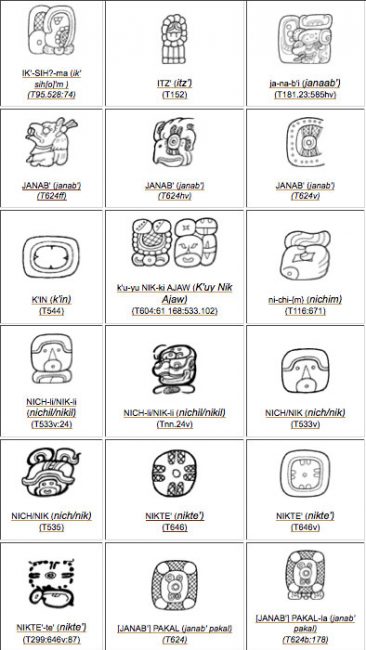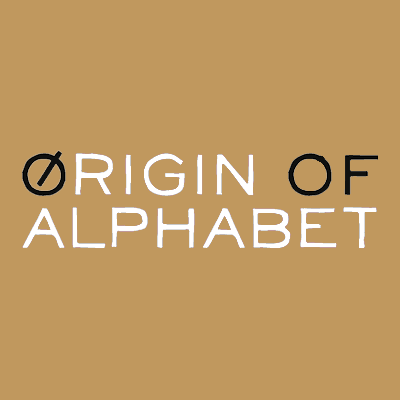Could Mayan Flowers Really Be Vaginas?
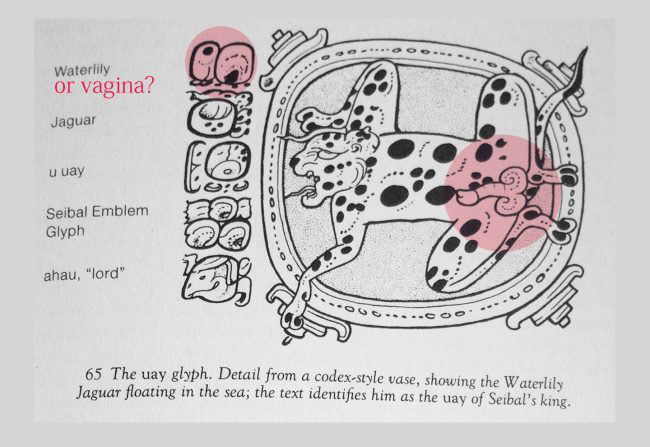 Is this first character really a Water Lily? Especially considering the package this jaguar is sporting? (See reddened circles.) The bisymmetry of the “u uay” character, third down, also bespeaks women, and it symbolizes a spirit animals that comes out when one sleeps.
Is this first character really a Water Lily? Especially considering the package this jaguar is sporting? (See reddened circles.) The bisymmetry of the “u uay” character, third down, also bespeaks women, and it symbolizes a spirit animals that comes out when one sleeps.
Michael Coe quotes a “young epigrapher” on page 272 of Breaking the Maya Code: “Shouldn’t we be looking at how other scholars deal with other literate civilizations, such as those of Mesopotamia and China? There might be important lessons here.”
Indeed, if we look at Sumerian cuneiform, there are many incidences of vaginas in all forms of words, such as “spouse,” “sluice, waterfall,” “merchant,” etc. If we look at Chinese characters, there are many incidences of women as conceptual underpinnings of major ideas, “boggy,” “adultery,” “jealousy,” etc. So it seems odd that when I search the Maya dictionary for “vagina,” “breast,” “milk,” “genitalia,” nothing comes up. Could we be misinterpreting a character, “flower” perhaps, for “vagina” or a women signifier?

NICH-Ii/NIK-li (nichil/nikil) (T533V:24) 1) n. “flower” 2) relat. “son.”
http://research.famsi.org/montgomery_dictionary/mt_entry.php?id=669&lsearch=n&search=flower
The above character is a Maya glyph for “flower, son.” Is that a mouth this flower/son has, or is this glyph showing a breast at the face of the son? Left 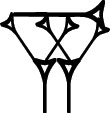 is the Sumerian cuneiform for “child, son, daughter.” I have rotated it 90° cw to match the Maya depiction above. The Sumerian depiction, though a “cruder” drawing of a child, still depicts a face with eyes, and what would seem to be two breasts at the bottom of the cuneiform. Considering that both of these depictions mean “child,” comparing them for similarities is not unreasonable.
is the Sumerian cuneiform for “child, son, daughter.” I have rotated it 90° cw to match the Maya depiction above. The Sumerian depiction, though a “cruder” drawing of a child, still depicts a face with eyes, and what would seem to be two breasts at the bottom of the cuneiform. Considering that both of these depictions mean “child,” comparing them for similarities is not unreasonable.
The “dumu” child cuneiform is from the Pennsylvania Sumerian Dictionary (http://psd.museum.upenn.edu)
A Table of Penises
from the Dictionary of Maya Hieroglyphs.
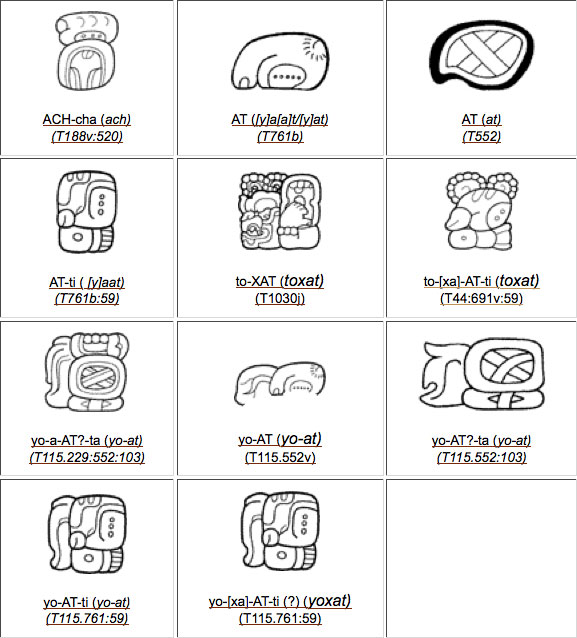
A Table of Flowers
from the Dictionary of Maya Hieroglyphs.